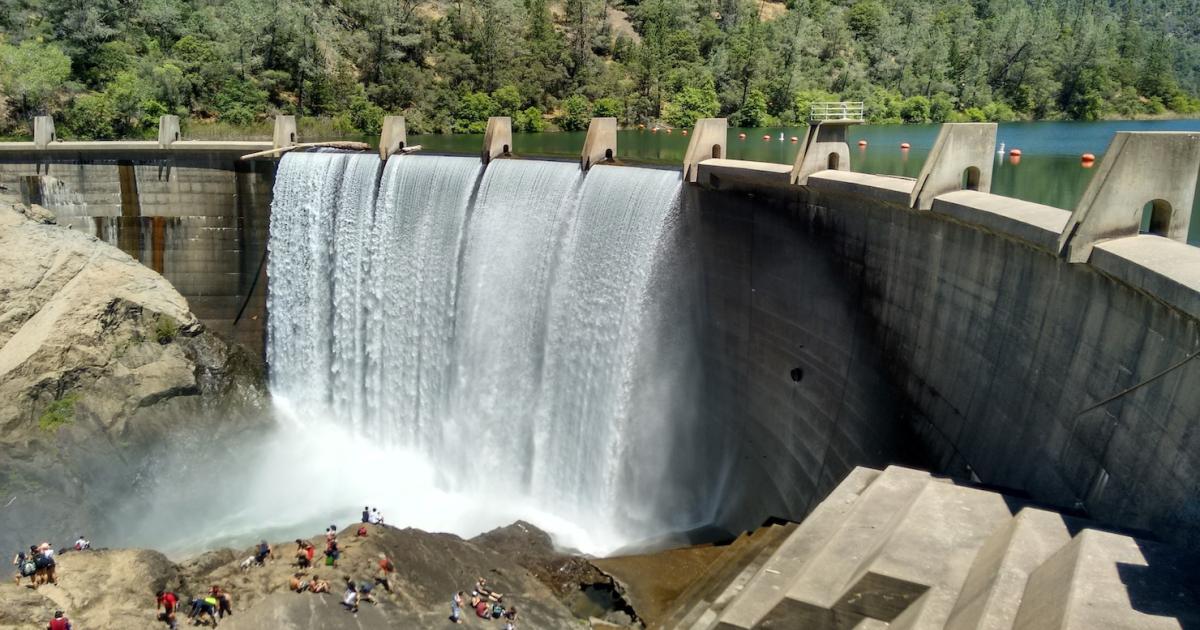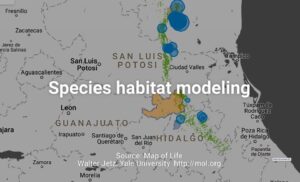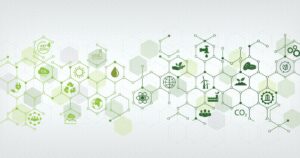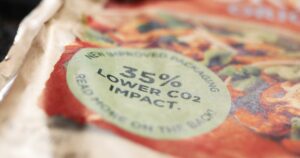
According to Ceres' Valuing Water Finance Initiative Benchmark report, no company has met 75 percent of the "Corporate Expectations for Valuing Water," which include standards for water quantity and quality, ecosystem protection, access to water and sanitation, board oversight and public policy engagement.
Eleven companies stand out as "on track," though, having met 50 to 75 percent of the criteria. The highest-ranking companies were all from the food sector, with Cargill, Danone and General Mills coming out on top. I recently spoke with Truke Smoor, Cargill’s global sustainability director for water, to understand the philosophy behind Cargill’s top-ranked water program and where it’s headed. Here are my key takeaways.
Don’t let perfect be the enemy of good
One question consistently comes up in water, biodiversity and deforestation conversations: Should we act with imperfect data or wait for better data? When it comes to water, large food companies have to move forward with imperfect data, taking a regional approach when farm-level information is unavailable. Companies should ask, "Who are my suppliers and how can we work together to reduce water impacts?"
It makes sense to focus first on the most water-intensive ingredients, which vary by company. For Cargill, those include cocoa, maize/corn, palm oil, soy and cattle products. For Mars, it’s rice, maize/corn, sugar, mint and grain. There’s no one right answer or best practice — the impact and opportunity for reducing water impacts will vary based on the quantity of the ingredient being produced and water security (both current and projected with climate change) in the sourcing region.
Integrate water across programs
In agriculture, a water strategy focused solely on water is inadequate. Robust water strategies include other components of sustainable food systems, such as healthy soils and functioning ecosystems.
For sustainability professionals, this means looking across programs to consider co-benefits without compromising the integrity of any one project. Cargill’s internal process looks at projects holistically, Smoor said, and allows teams to tag them with the appropriate impacts (water, land). This system allows them to calculate and track the relevant co-benefits of each project and provides transparency across teams.
It’s rare to hear a sustainability professional speak publicly about a cross-cutting project in this way. Perhaps the intense pressure for companies such as Cargill to address large-scale land use conversion and deforestation makes them less likely to share small wins that cut across land and water, such as protecting riparian buffers on agricultural lands. Plus, projects with water benefits tend to be local in scale and overshadowed by global carbon projects. But comprehensive and streamlined approaches are desperately needed to address the water and biodiversity crises.
Create enabling conditions for systems-level change
One area where Cargill came up short in Ceres’ report was on collective action. It’s a phrase that is so overused in the water space that I often find myself wondering if people are just saying it to signal they belong in the conversation. So I was surprised by Smoor’s answer. She didn’t pretend to be focused on collective action in the traditional sense of the phrase; rather, she described Cargill’s role as establishing enabling conditions for large-scale systems-level change.
Why? Its footprint and supply chain is so massive that even a small shift in water use in its production or sourcing practices can quickly get to scale on its own. In 2024, she’s eager for Cargill to focus on implementation using regenerative agriculture as a pathway to improve water resilience across supply chains. Other areas of early exploration include improved grazing management in protein supply chains and improved irrigation efficiency.
Unfortunately, one vital water-saving solution is still missing from that narrative: an overall reduction in the production and consumption of animal products. The water footprint of meat and dairy eclipses that of other crops. In the Colorado River basin, for example, 55 percent of total water consumption is used to grow feed for livestock, totaling 1 trillion gallons per year . We can and should improve water use efficiency in our existing systems, but truly catalytic solutions will include a shift away from our current meat-heavy diets. Companies such as Cargill are uniquely positioned to drive that change.
[Subscribe to our free Food Weekly newsletter to get more great analysis on sustainable food systems news and trends.]
- SEO Powered Content & PR Distribution. Get Amplified Today.
- PlatoData.Network Vertical Generative Ai. Empower Yourself. Access Here.
- PlatoAiStream. Web3 Intelligence. Knowledge Amplified. Access Here.
- PlatoESG. Carbon, CleanTech, Energy, Environment, Solar, Waste Management. Access Here.
- PlatoHealth. Biotech and Clinical Trials Intelligence. Access Here.
- Source: https://www.greenbiz.com/article/how-cargill-advancing-its-water-stewardship-policy
- :has
- :is
- :where
- $UP
- 2024
- 50
- 75
- a
- About
- access
- across
- Act
- Action
- address
- advancing
- Agricultural
- agriculture
- All
- allows
- an
- analysis
- and
- animal
- answer
- any
- approach
- approaches
- appropriate
- ARE
- AREA
- areas
- AS
- ask
- At
- away
- based
- BE
- behind
- being
- Benchmark
- benefits
- BEST
- Better
- board
- both
- but
- by
- calculate
- came
- CAN
- carbon
- Cargill
- cattle
- chain
- chains
- change
- Climate
- Climate change
- Collective
- Collective Action
- Colorado
- comes
- coming
- Companies
- company
- components
- comprehensive
- compromising
- conditions
- Consider
- consistently
- consumption
- Conversation
- conversations
- Conversion
- Corporate
- crises
- criteria
- crops
- Current
- Cut
- dairy
- data
- deforestation
- described
- desperately
- Director
- drive
- each
- eager
- Early
- ecosystem
- Ecosystems
- efficiency
- enabling
- engagement
- establishing
- Ether (ETH)
- Even
- example
- existing
- expectations
- exploration
- finance
- Find
- First
- Focus
- focused
- food
- Footprint
- For
- Forward
- Free
- from
- functioning
- General
- General Mills
- get
- Global
- great
- Grow
- Have
- having
- headed
- healthy
- hear
- here
- How
- HTML
- HTTPS
- i
- if
- Impact
- Impacts
- implementation
- improve
- improved
- in
- include
- information
- ingredient
- ingredients
- Initiative
- integrity
- internal
- IT
- ITS
- jpg
- just
- Key
- Land
- lands
- large
- large-scale
- less
- let
- likely
- local
- looking
- LOOKS
- MAKES
- management
- mars
- massive
- means
- Meat
- met
- mills
- mint
- missing
- more
- most
- move
- move forward
- my
- myself
- NARRATIVE
- needed
- news
- Newsletter
- no
- of
- often
- Oil
- on
- ONE
- Opportunity
- or
- Other
- our
- out
- overall
- Oversight
- own
- palm
- pathway
- People
- per
- percent
- perfect
- perhaps
- philosophy
- plato
- Plato Data Intelligence
- PlatoData
- plus
- policy
- positioned
- practice
- practices
- pressure
- process
- Produced
- Production
- Products
- professional
- professionals
- Program
- Programs
- project
- projected
- projects
- protecting
- protection
- Protein
- provides
- public
- publicly
- quality
- quantity
- question
- quickly
- RARE
- rather
- recently
- reduce
- reducing
- reduction
- regenerative
- Regenerative Agriculture
- region
- regional
- relevant
- report
- resilience
- Rice
- right
- River
- robust
- Role
- Said
- saying
- Scale
- sector
- security
- sense
- Share
- she
- shift
- Short
- should
- Signal
- small
- So
- solely
- solution
- Solutions
- Sourcing
- Space
- speak
- stand
- standards
- Stewardship
- Still
- strategies
- Strategy
- streamlined
- such
- sugar
- suppliers
- supply
- supply chain
- Supply chains
- surprised
- Sustainability
- sustainable
- system
- Systems
- TAG
- Takeaways
- taking
- teams
- tend
- that
- The
- Them
- they
- this
- those
- though?
- to
- together
- top
- Total
- totaling
- track
- traditional
- Transparency
- Trends
- Trillion
- truly
- understand
- uniquely
- use
- used
- using
- valuing
- vary
- vital
- wait
- was
- Water
- Way..
- we
- weekly
- were
- when
- which
- WHO
- will
- Wins
- with
- without
- wondering
- Work
- work together
- zephyrnet










